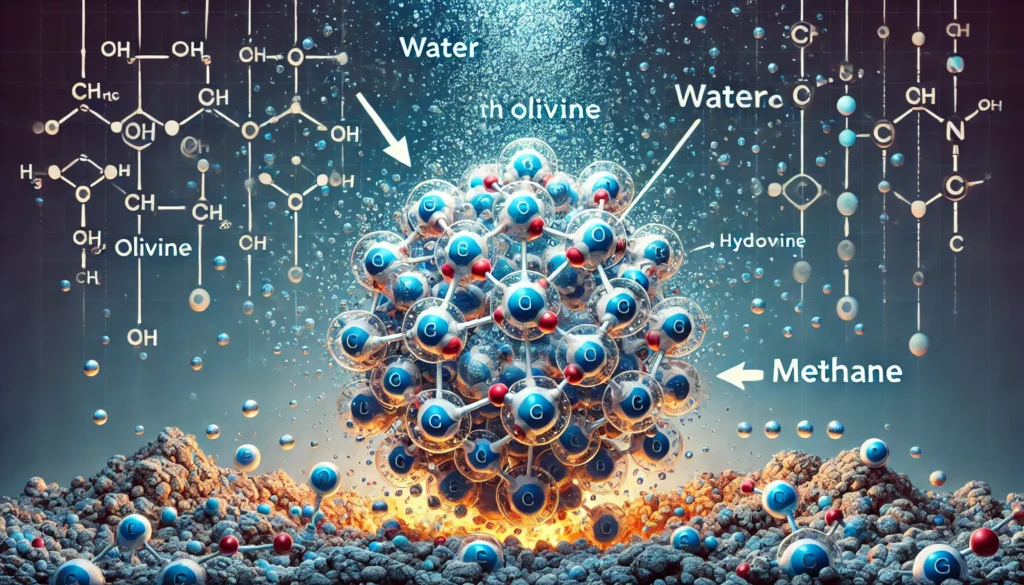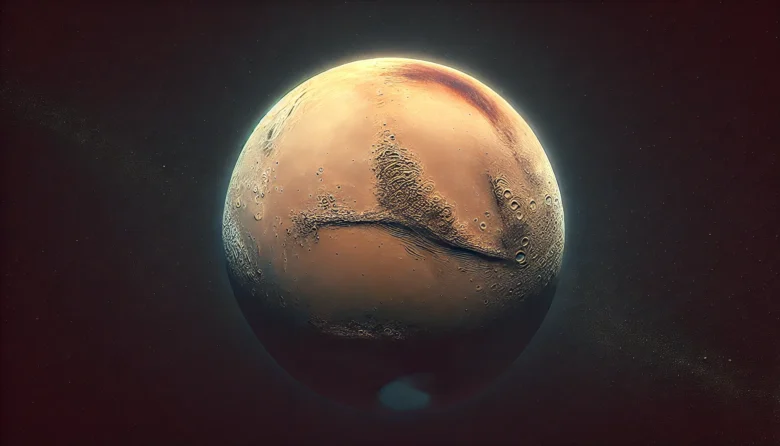Fun Fact: Did you know that Mars, now a cold and barren desert, once had liquid water flowing on its surface?
Yes, it’s true! Mars wasn’t always the dry, lifeless planet we see today. Billions of years ago, this Red Planet had a much thicker atmosphere, which allowed liquid water to exist. But somewhere along the line, Mars lost most of its atmosphere, transforming into the cold, desert-like world it is today. This transformation has puzzled scientists for decades—what exactly happened to Mars’ atmosphere?
A new study published in the journal Science Advances may provide some answers. Geologists Joshua Murray and Oliver Jagoutz, from the Massachusetts Institute of Technology (MIT), have developed a compelling hypothesis about how Mars’ atmosphere gradually diminished over the years. Their research sheds light on the mysterious processes that may have stripped away Mars’ thick, carbon dioxide-rich atmosphere and dried up its water supply.
The Mystery of Mars’ Atmosphere
Mars’ atmosphere today is thin, consisting mostly of carbon dioxide (CO₂) with traces of other gases like nitrogen and argon. But ancient Mars was different. There is increasing evidence that liquid water flowed on its surface, suggesting the planet must have once had a much thicker atmosphere capable of trapping enough heat to keep water in liquid form.
Roughly 3.5 billion years ago, things started to change. The atmosphere thinned dramatically, and Mars’ water supply evaporated or froze. But why? The recent study offers insights into this question by focusing on how Martian rock may have interacted with the planet’s atmosphere over time.
Trapped in the Rocks: Mars’ Carbon Dilemma
The researchers suggest that carbon dioxide may have been slowly removed from the atmosphere through a geological process that involved Martian rocks, specifically a clay mineral called smectite. Smectite, already well-known on Earth, is an effective carbon trap. It has the unique ability to absorb and store carbon dioxide for millions—even billions—of years within its folds.
The researchers theorized that water trickled through Martian rock formations, setting off a chain of reactions that progressively pulled carbon dioxide out of the air and converted it into methane, a gas that could be stored on Mars’ surface for long periods. This steady extraction of CO₂ could have been enough to significantly thin out Mars’ atmosphere over time, leading to the planet’s dramatic environmental changes.
Testing the Theory on Earth
Interestingly, the study didn’t start on Mars but here on Earth. The researchers were working with smectite clay on our own planet when they discovered its potential to act as a carbon sink. They found that smectite could draw in and store carbon dioxide for millions of years if exposed to the atmosphere. Over time, this process could theoretically remove enough CO₂ from the air to have a significant impact.
As Joshua Murray magnified a map of the Martian surface, he discovered traces of smectite clay on Mars. This led him to wonder if similar reactions could have occurred on the Red Planet, trapping carbon and gradually depleting the atmosphere.
The Role of Water on Mars
Water, which once flowed on Mars, played a critical role in this atmospheric transformation. Using data on Mars’ water history, the researchers developed a computer model to simulate how Martian water, when in contact with a mineral called olivine, could have triggered the reactions needed to trap carbon dioxide.
Here’s how it worked: oxygen atoms in water likely bonded with the iron in olivine, freeing up hydrogen to combine with CO₂ and form methane. Over time, this reaction led olivine to transform into smectite, which in turn trapped more methane. Essentially, water acted as the catalyst in this long-term atmospheric change, with smectite clay playing a key role in storing carbon.

Implications for Mars Exploration
So, what does this mean for the future of Mars exploration?
The study suggests that methane trapped on Mars’ surface could be a valuable resource for future human missions to the planet. Methane, after all, can be used as an energy source. This finding not only helps explain Mars’ past but also offers exciting possibilities for the future, particularly for human exploration and colonization efforts.
As humanity looks to Mars for potential colonization, understanding the chemical processes that shaped the planet will be crucial. With methane stored on the planet, it may even be possible to use this gas as a fuel for rockets or to generate power for colonies.
Conclusion: Mars’ Atmosphere Unveiled
While Mars may seem like a dead planet today, new research shows that its past was far more dynamic. Scientists like Joshua Murray and Oliver Jagoutz are uncovering the hidden history of the Red Planet, revealing how processes deep within its rocks may have played a role in stripping away its atmosphere.
This fascinating discovery helps us piece together Mars’ environmental past and offers clues for future exploration. Who knows—one day, we might be using the same methane trapped in Mars’ rocks to fuel our missions to explore even further into space.
Author’s Note
Exploring the chemistry of planetary processes is always fascinating, especially when we start to connect the dots between ancient environments and the possibility of future human exploration. The discovery of methane as a potential resource on Mars brings a new dimension to space exploration.
G.C., Ecosociosphere contributor.
References and Further Reading
- NASA’s Mars Exploration Program
- Nagle, M., & Staples, B. (2017). 2017, UMaine News Press Releases. https://core.ac.uk/download/401620423.pdf
- Cold Planet: Unraveling the Weak Greenhouse Effects on Mars – Mars on Earth Project – MoEP. https://marsonearthproject.org/cold-planet-unraveling-the-weak-greenhouse-effects-on-mars/
- How Mars’ atmosphere went missing: New study offers clues.




